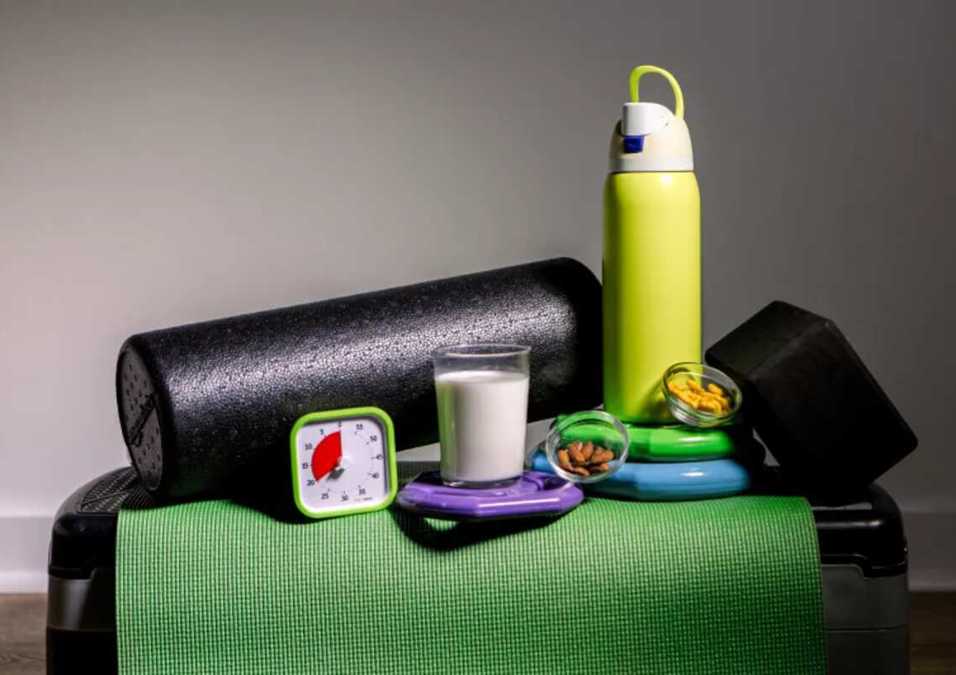Reduce Soreness in 4 Steps

SIGN UP FOR YOUR FREE DAY PASS TODAY!
Before turning professional, track and field athlete Anna Cockrell didn’t always cool down or stretch post-workout.
With night classes and early morning practices during her college years, time was scarce.
However, once she made post-workout recovery a priority, it transformed her performance, enabling her to achieve record-breaking speeds.
“The things I’m capable of physically now are beyond anything I’ve achieved before,” shares Cockrell, an Olympic silver medalist.
Research highlights that proper recovery after exercising can lower the risk of injuries, alleviate soreness, and elevate athletic performance.
Despite this, many people neglect recovery, states Dr. Natasha Desai, co-director of the Center for Women’s Sports Medicine at NYU Langone Health.
"Most individuals allocate time for the exertion itself but ignore self-care and recovery, which can lead to long-term issues," she explains.
Regardless of whether you’re a seasoned athlete or just starting, here are four science-backed recovery steps to integrate into your routine:
Step 1: Take 10-15 minutes to cool down
Cooling down acts as a bridge between your workout and rest, helping prevent dizziness or a dramatic energy drop.
During exercise, your heart directs blood away from certain organs and into your active muscles. Once you're done exercising, you need a transition period to redirect that blood flow.
Skipping this crucial step can result in a sharp blood pressure drop, leaving you feeling light-headed or fatigued, explains Desai.
How to cool down:
After your workout, spend about 10-15 minutes doing easy, low-intensity movements, such as brisk walking, light jogging, or slow cycling.
Alternate between activities if you'd like, recommends Cockrell. Even if it means slightly shortening your core training, it’s worth it—your session isn’t complete until you cool down, she says.
Step 2: Foam roll to reduce soreness and boost performance
Feeling a little post-workout soreness is normal and can even be satisfying as it means you’ve pushed yourself, says Desai.
However, extreme soreness—like struggling to get out of bed the next day—is a sign your muscles are too tight, which increases your risk of injury if you continue working out without proper recovery.
Foam rolling, a self-massage technique, can help alleviate this soreness.
A 2015 study revealed that participants who foam rolled after doing heavy squats experienced less pain and performed better on follow-up sprints and jumps.
How to foam roll:
Foam rollers are commonly available at gyms or can be purchased for as little as $10 to $15. Place the roller on the ground and position your body so the targeted muscle is on top.
Roll back and forth slowly for about a minute per muscle group. Focus on the areas you worked out, such as your quads, glutes, and hamstrings.
Step 3: Stretch to improve flexibility and prevent injuries
Stretching might be easy to overlook, but it’s essential for increasing flexibility and safe movement, reducing the risk of injury.
However, it’s important to strike a balance. Stretching should feel challenging but not painful, says Cockrell.
How to stretch:
Start with basic, gentle stretches. Hold each position for about 30 seconds and stop immediately if it feels painful. Here are a few to try:
- Quadriceps Stretch: Stand and pull one ankle toward your butt, holding for 30 seconds. Switch sides.
- Knee-to-Chest Stretch: Lie on your back and pull one knee toward your chest. Hold for 30 seconds and switch sides.
- Yoga: Cockrell enjoys yoga on rest days. Focus on progress, not perfection, as you try new poses.
Step 4: Eat protein post-workout for muscle repair
After exercise, your muscles develop microtears that need to be repaired. Consuming protein helps your body rebuild these fibers, making them stronger over time.
This is especially critical immediately after a workout when your body is better able to utilize protein, breaking it into amino acids that aid muscle recovery, explains Jeremy Ford, a sports dietitian.
How to get your protein fix:
Choose sources that work for your lifestyle. Quick options include chocolate milk, protein shakes, or bars. If you’re plant-based, opt for protein-rich foods like lentils, beans, almonds, sunflower seeds, tofu, or edamame.
Bonus Tip: Rejuvenate with a bath
For extra self-care, indulge in a relaxing bath. Cockrell swears by her regular baths, three to four times weekly, enhanced with Epsom salts and essential oils.
Research suggests Epsom salts can ease inflammation and relax sore muscles, turning recovery into a soothing ritual rather than a chore.
Recovery is as important as the workout itself.
By cooling down, foam rolling, stretching, and refueling with protein, you’re setting yourself up for better performance, fewer injuries, and an enjoyable fitness experience.
Go ahead—treat your body with the care it deserves.
Source: npr
The opinions shared in the GymNation blog articles are solely those of the respective authors and may not represent the perspectives of GymNation or any member of the GymNation team.
GET YOUR FREE TRIAL TODAY
















































































